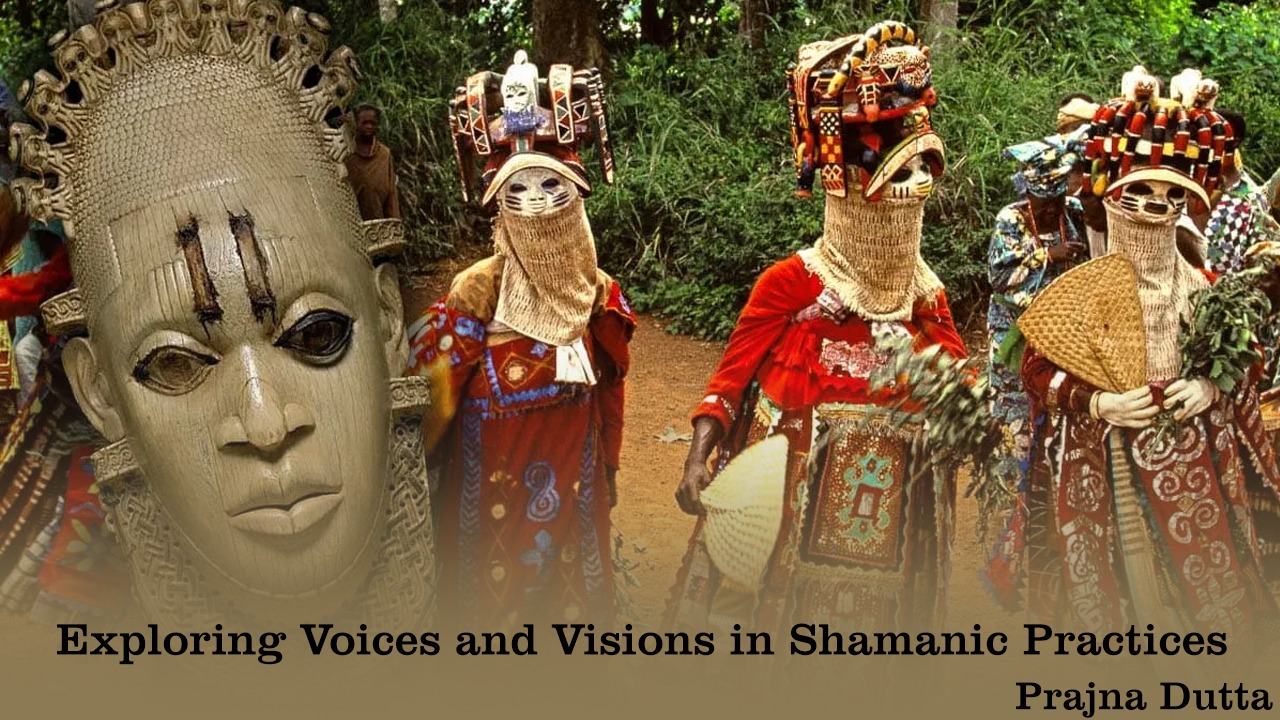Shamanism, one of the world's oldest spiritual practices, is deeply rooted in the belief that shamans, or spiritual healers, can access alternate realities to gain insight, healing, and guidance. One of the core aspects of shamanic practices is the experience of voices and visions, which play a significant role in the shaman's journey to the spirit world.
Historically, shamans have utilized various methods to enter altered states of consciousness, including drumming, chanting, dancing, and the use of hallucinogenic plants. These altered states are believed to enable shamans to communicate with spirits, ancestors, and other entities, and to retrieve information that can be used for healing, divination, and problem-solving.
Voices and Visions in Shamanic Practices Around the World
Shamanic traditions that incorporate voices and visions can be found in cultures across the globe, each with its unique practices and beliefs. For example, in the indigenous traditions of the Amazon rainforest, shamans often use ayahuasca, a potent psychedelic brew, to induce visionary experiences that are believed to provide profound insights and spiritual healing.
Similarly, in the Siberian Tungus tribe, shamans traditionally consume the hallucinogenic mushroom Amanita muscaria to enter trance states and receive guidance from the spirit world. In North America, Native American shamans have historically used peyote in religious ceremonies to facilitate communication with the divine and to gain wisdom through visions.
In addition to the use of psychoactive substances, shamanic practices also involve non-drug-induced methods of inducing altered states of consciousness. In Mongolia, shamans perform ritualistic dances accompanied by drumming to enter trance states, during which they may receive visions and messages from the spirit world. In the indigenous cultures of Africa, trance states are induced through rhythmic music and dance, allowing shamans to connect with the spiritual realm and receive guidance.
The Role of Voices and Visions in Shamanic Healing
Voices and visions experienced during shamanic practices are often considered to be significant sources of healing and transformation. Shamans may receive instructions on how to treat physical ailments, resolve spiritual imbalances, or guide individuals through difficult transitions in life. These experiences are also believed to provide insight into the underlying causes of illness and suffering, allowing shamans to address not only the symptoms but also the root of the problem.
Moreover, voices and visions can serve as a means of connecting with spiritual allies, such as animal spirits, ancestors, and other benevolent entities, who may offer protection, guidance, and empowerment to the shaman and those seeking healing.
Contemporary Perspectives on Shamanic Voices and Visions
In recent years, there has been a growing interest in shamanic practices and the experiences of voices and visions, particularly within the context of spiritual exploration and personal growth. While the traditional use of hallucinogenic substances in shamanism has raised ethical and legal concerns in some regions, there is a renewed appreciation for the potential therapeutic and transformative effects of these practices.
Furthermore, contemporary practitioners of shamanic healing often emphasize the importance of integrating the insights gained from voices and visions into everyday life. Whether through artistic expression, journaling, or ritualistic practices, individuals seek to honor and make use of the wisdom and guidance received during shamanic journeys.
In conclusion, voices and visions in shamanic practices play a vital role in facilitating spiritual experiences, healing, and personal transformation. While the use of hallucinogenic substances is a prominent feature in some shamanic traditions, it is important to acknowledge that the cultural, historical, and legal contexts surrounding these practices vary widely.
As interest in shamanic traditions continues to grow, it is essential to approach these practices with respect for their cultural origins and to consider the potential ethical implications of adopting or adapting shamanic techniques. Furthermore, individuals who seek to explore shamanic practices should do so with a deep understanding of the potential risks and benefits, as well as with guidance from experienced practitioners or mentors.
Whether viewed through a traditional or contemporary lens, the experiences of voices and visions in shamanic practices offer a window into the profound interconnectedness of the human spirit, the natural world, and the realm of the divine. By honoring and integrating these experiences with mindfulness and reverence, individuals can potentially access deep wells of wisdom and healing, enriching their spiritual journeys and fostering a greater sense of connection to the mysteries of existence.
As we continue to explore the multifaceted tapestry of shamanic traditions, it is important to approach these ancient practices with curiosity, humility, and a deep respect for the diverse cultures from which they originate. Through thoughtful reflection and open-minded inquiry, we can learn from the wisdom of voices and visions in shamanic practices while honoring the traditions that have preserved these profound teachings for generations.
In embracing the insights gained from shamanic experiences, we may find inspiration, guidance, and a renewed sense of wonder at the boundless mysteries of the spiritual realm.
May the voices and visions that arise from shamanic practices continue to illuminate the paths of seekers, healers, and spiritual wayfarers, guiding them toward greater understanding, compassion, and harmony within themselves and the world around them.

Comments